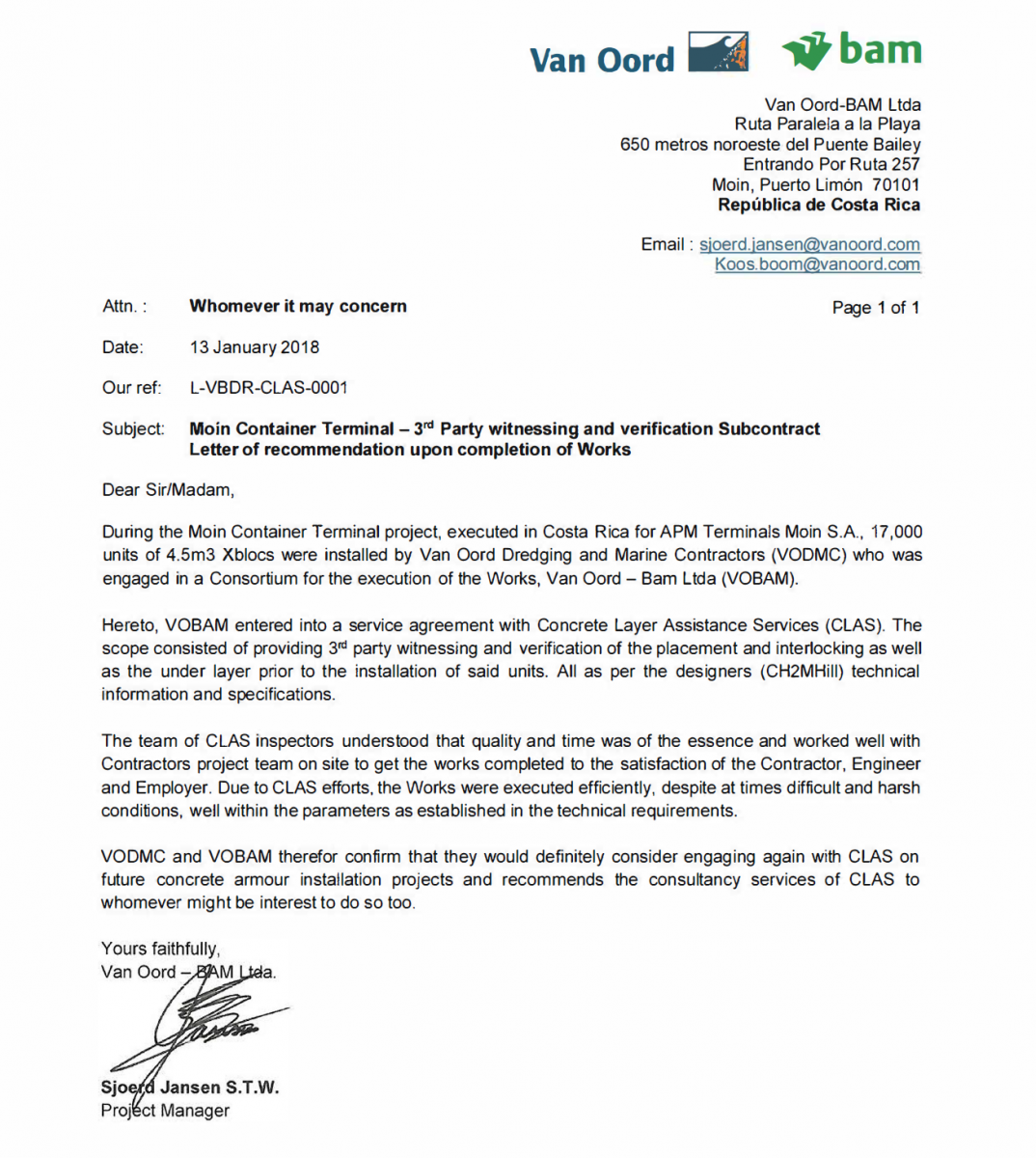PRESENTATION OF THE XBLOC® block

The XBLOC ® block was patented in 2002 and the patent was extended to Europe in 2003:
XBLOC ® LEGAL SITUATION
The XBLOC ® was protected by its patent until July 2023. The X-bloc® has fallen into the public domain.
The X-bloc ® brand was registered by DELTA MARINE CONSULTANTS which markets it.
To learn more click on the Link license free blocks
PLACING THE XBLOC ®
Contacts with the lower rank of XBLOC ® must be established with solid support. The main obstacle to this good interlocking is due to the attachment of the XBLOC ® on the riprap of the underlayer which stops the movement down the block. The only way to get over this constant problem is to visually ensure that the block is in its final interlocking position. In about 40% of cases, a natural installation will lead to poor interlocking and the XBLOC ® thus installed will still have the possibility of further descending under the action of its weight and / or the sea.
Changing the orientation of the blocks does not eliminate this problem. Only a visual check of each block as it is adjusted between the two XBLOC ® of the lower row allows this, subject to mastering the principle of interlocking and the inspection procedures.
This badly interlocked Xbloc ® broke due to the impact with the lower rank
Appearance of a correctly placed XBLOC ® armor
Sur et sous l’eau les appuis avec le rang inférieur sont bien établis. Il n’existe pas de défauts de contacts.
Les orientations des blocs sont variées. Aucun XBLOC ® ne peut descendre ou osciller. Il n’y a pas de trous. Il n’y a pas d’XBLOC ® hors profil.
MOST COMMON PLACEMENT DEFAULTS
XBLOC ® out of profile

Possible origin
Defect of the underlayer, insufficient training of installation teams, installation error, ineffective installation control. The out of profile is defined in the license vendor's document as a block that does not touch the underlayer. We cannot accept this definition. A defect in the underlayer can cause an out of profile attitude.
Risk
An XBLOC ® out of profile can be extracted by a strong swell. In its fall it risks breaking the XBLOC ® underneath and its extraction will cause a large hole. A single XBLOC ® out of profile which is extracted can initiate unraveling of the shell in the affected area and lead to a major disorder.

Required action
Disassemble the area and correctly place the Xbloc ®. If the origin of the nonconformity is a defect in the underlayer, the underlaymer must be adjusted before reinstalling the Xbloc ®.
XBLOC ® mounted in columns

Column mounting is not indicated as a non-compliance in the technical reference published by the license vendor. The reference system mentions the installation of a block between two of the lower row. However, we have found that the mounting in columns of XBLOC ® produces movements and breakage and must be corrected. That’s why we’re mentioning it.
Possible origin
It is also indicated that the XBLOC ® must be nested with one another and not have freedom of movement. The installation in XBLOC ® columns which have freedom of movement is attributable to insufficient training of the installation teams, an installation error, and ineffective installation control.
Risk
Column mounted XBLOCs are generally unstable and do not have the correct downforce with the lower row. They are generally not properly blocked by higher tier XBLOCs ®. They will move and possibly break. If they do break the area will start to unravel and will need to be rebuilt.
Required action
Normally, the area mounted in columns should be dismantled and these XBLOC ® correctly positioned respecting the laying mesh. CLAS has the know-how that allows this type of non-compliance to be resolved without dismantling the XBLOC ® above, in the majority of cases.
XBLOC ® badly interlocked

Possible origin
A poorly interlocked XBLOC ® generally got caught in a riprap on the slope and did not descend to its final interlocking position. This concerns approximately 40% of XBLOC ® placed "naturally" on the target position. The cause is attributable to insufficient training of the installation teams, an installation error, ineffective installation control.
Risk
Badly interlocked XBLOC ® are unstable and do not have the right supports between them. They will move and possibly break. If they do break the area will start to unravel and will need to be rebuilt.
Required action
Normally, the area should be dismantled and these XBLOC ® correctly positioned, respecting the placing mesh and the strong supports with the XBLOC ® of the lower row. CLAS has the know-how that allows this type of non-compliance to be resolved without dismantling the XBLOC ® above in the majority of cases.
XBLOC ® broken

Possible origin
The quality of the concrete should be checked first. If the quality of the concrete is not in question, the origin is then linked to a movement of the XBLOC ® due to poor interlocking during installation. The cause is then attributable to the insufficient training of the installation teams, an installation error, the ineffective installation control.
Risk
When the broken XBLOC ® no longer participate effectively in interlocking, the area begins to unravel and will need to be reconstructed.
Required action
The action required depends on the position of the broken XBLOC ®. For example, a first row XBLOC ® which has been broken by rockfill from the toe mount, but which is properly blocked, should not be replaced. If the broken XBLOC ® is in the middle of the armor and no longer participates in the interlocking of the aera, then the area must be dismantled and the broken XBLOC ® replaced.
Holes

Possible origin
Insufficient training of installation teams, installation error, ineffective installation control.
Risk
The unerlayer rocks that we see can be split and mined. There is a risk of the area moving, causing XBLOC ® to break, which will then initiate the unraveling of the shell.
Required action
It depends on the position of the hole. An isolated hole in an otherwise properly constructed area can be plugged with a bag of concrete, for example, provided that once installed the bag of concrete cannot be extracted. If this is not possible, or if the hole is close to the surface, the area must be dismantled and the XBLOC ® correctly re-installed.
XBLOC ® placed with the nose in the slope

The license vendor does not consider this position to be a nonconformity. We have found that this position causes a local decrease in density, makes it more difficult to place the Xbloc ® on top, and pressing down with only the nose in the slope can cause movement during storms. That’s the reason we mention it.
Origin
Insufficient training of installation teams, installation error, ineffective installation control.
Risk
This type of positioning can cause movements and therefore breakage of Xbloc ®. The breakage of XBLOC ® initiates the progressive unraveling of the armor.
Required action
Usually, the area must be dismantled and the Xbloc ® replaced. CLAS has the know-how that allows this type of non-compliance to be adjusted without dismantling in the majority of cases.
EXPECTED PLACEMENT RATE WITH XBLOC®
The pace of installation depends on the following factors:
Size of blocks: The larger the block, the harder it is to move and the more prone to breakage in the event of an impact.
Placing machines: The hydraulic excavator allows a double laying rate compared to the cable crane, but its use is limited by the size of the X-bloc® and ther distance to be placed.
Quality of the underlayer: an underlayer that does not respect the tolerances and has significant roughness will slow down the placement and limit the possibilities of interlocking the blocks.
Quality of the training of the installation team: a good theoretical and practical training which includes training in safety, the XBLOC ® technique and the gradual increase in the installation rate, lasts about a month. It is not just training, it is learning that obeys educational rules and progression that can only be taught by construction specialists.
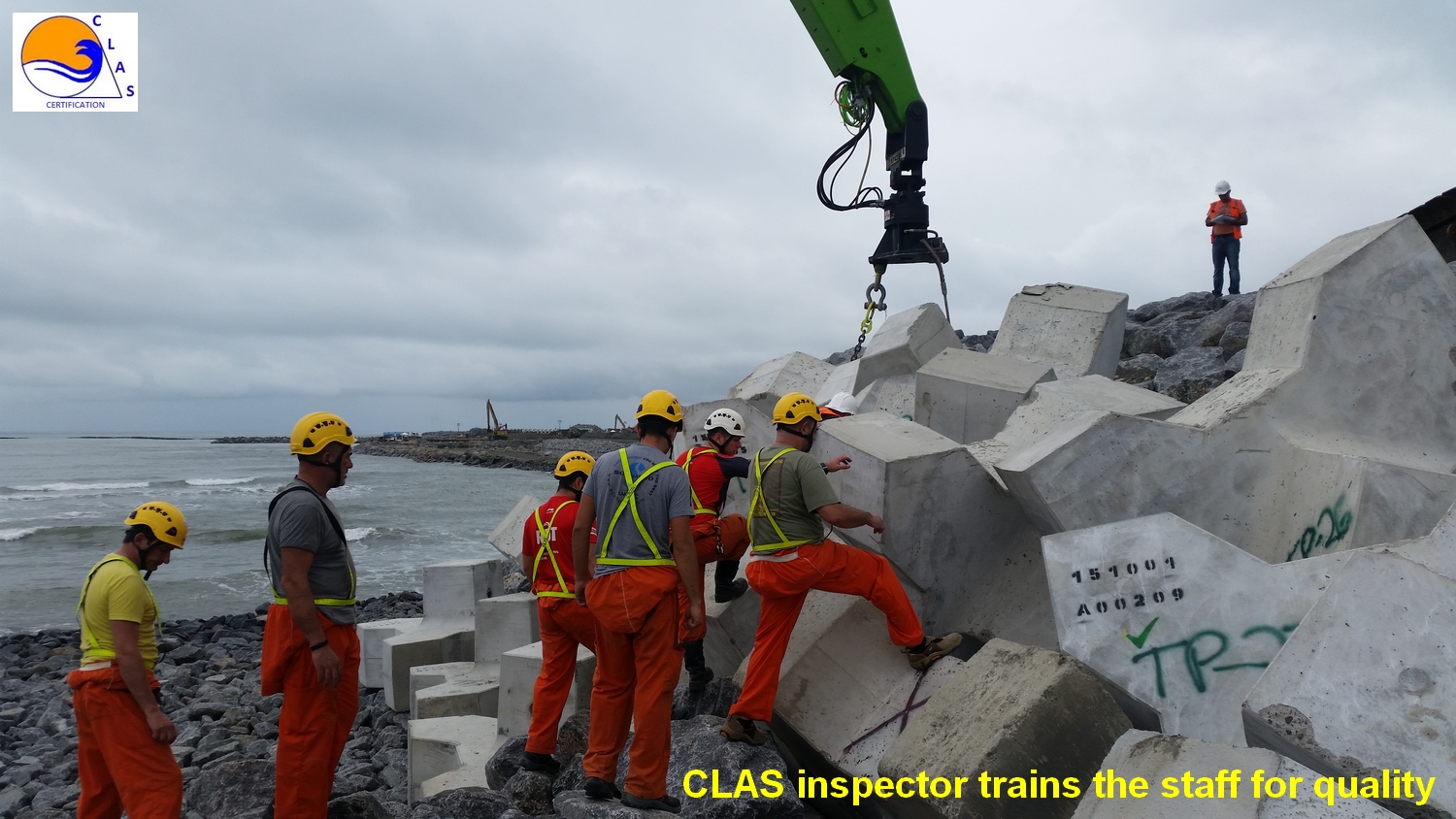
Visibility: good visibility will facilitate visual inspection operations. The operator must be able to see the shell from the front, perpendicular to the slope surface, and receive information on the points of contact with the XBLOC ® in the lower row and with the slope. Only a diver can properly carry out these checks. In clear water it is very fast, in dirty water it takes longer and requires extensive learning, especially in safety.

Installation tools used: There are three ways to install:
1 Divers is the fastest and most reliable system. The diver can control everything, including contact with the underlayer. He can appreciate the quality of the supports and help to remove the wire by guiding the movements of the excavator.

To learn more click on the Divers link.
2 The POSIBLOC ™ is the system that we consider the slowest and the least reliable because it is based on the theoretical position of the block in x, y, z and not on the nesting, which is the opposite laying rules, which favor nesting over the target. On the other hand the system shows a virtual image to the operator which is often different from the reality, due to the imprecision of the system.
The software uses colors to indicate to the operator whether the block is on target or not. The operator is trained to pose according to the right nesting and not according to the target. It will therefore rely on the contacts shown by the software, while trying to respect the colors. Unfortunately, the imprecision of the system does not allow us to have a reliable representation of reality:
The blocks are in contact on the image provided by the software, they are not in reality.

Conversely here the blocks are not in contact on the image and are in reality.

To learn more click on the POSIBLOC ™ link
3 THE ECOSCOPE ® is an acoustic system which increases the rate of installation in dirty water but cannot be dispensed with a check by diver, because once the block is installed, the image does not allow not to appreciate the quality of the contacts with the XBLOC ® of the lower row, nor the nesting and installation defects.

The ECOSCOPE ® may also show holes and nesting defects that do not exist. This is due to the artifacts that can often appear with acoustic tools like ECOSCOPE ® or multibeam sonar.
To learn more click on the ECHOSCOPE link
Quality and frequency of installation checks: The longer we delay the frequency of checks, the more we are exposed to major dismantling which will seriously penalize production. There is no point in affording the means to install 10 XBLOC ® per hour if you have to dismantle 50% at the end of the day.
More than the hourly installation rate, it is the frequency and quality of inspections that will allow production objectives to be achieved. Very close checks, by divers, will make it possible to eliminate dismantling by limiting the treatment of installation faults to real-time adjustments.
On the contrary, a multibeam sonar check after the installation of several rows, will not make it possible to see all the installation faults and will require significant dismantling in the event of additional control by divers. In the event that only the multibeam is implemented, the quality of the construction cannot be certified in CLASS A. The durability of the work cannot be guaranteed.
The average production by cable crane laying with divers trained by CLAS is 6 to 8 XBLOC ® per hour, approved.
The average hydraulic excavator production with CLAS trained divers is 12 to 15 XBLOC ® per hour, approved.
These statistics, derived from site data, include one-off dismantling.
OUR EXPERIENCE WITH THE X-BLOC ® BLOCK
2012 DAS ISLAND ABU DHABI

33.333 X-bloc ® 3 m3.
SIXCO was to build the DAS Island Extension and its airport. Before the end of the dike construction work, settling and breakage of X-bloc ® appeared.

IDMer, which became CLAS, acted as an independent consultant with the following mission:
Explain the damage.
Propose solutions for the recovery of non-conformities.
Train installation teams and divers.
Control the work.
Certify that the shell conforms to the DMC design and TID.
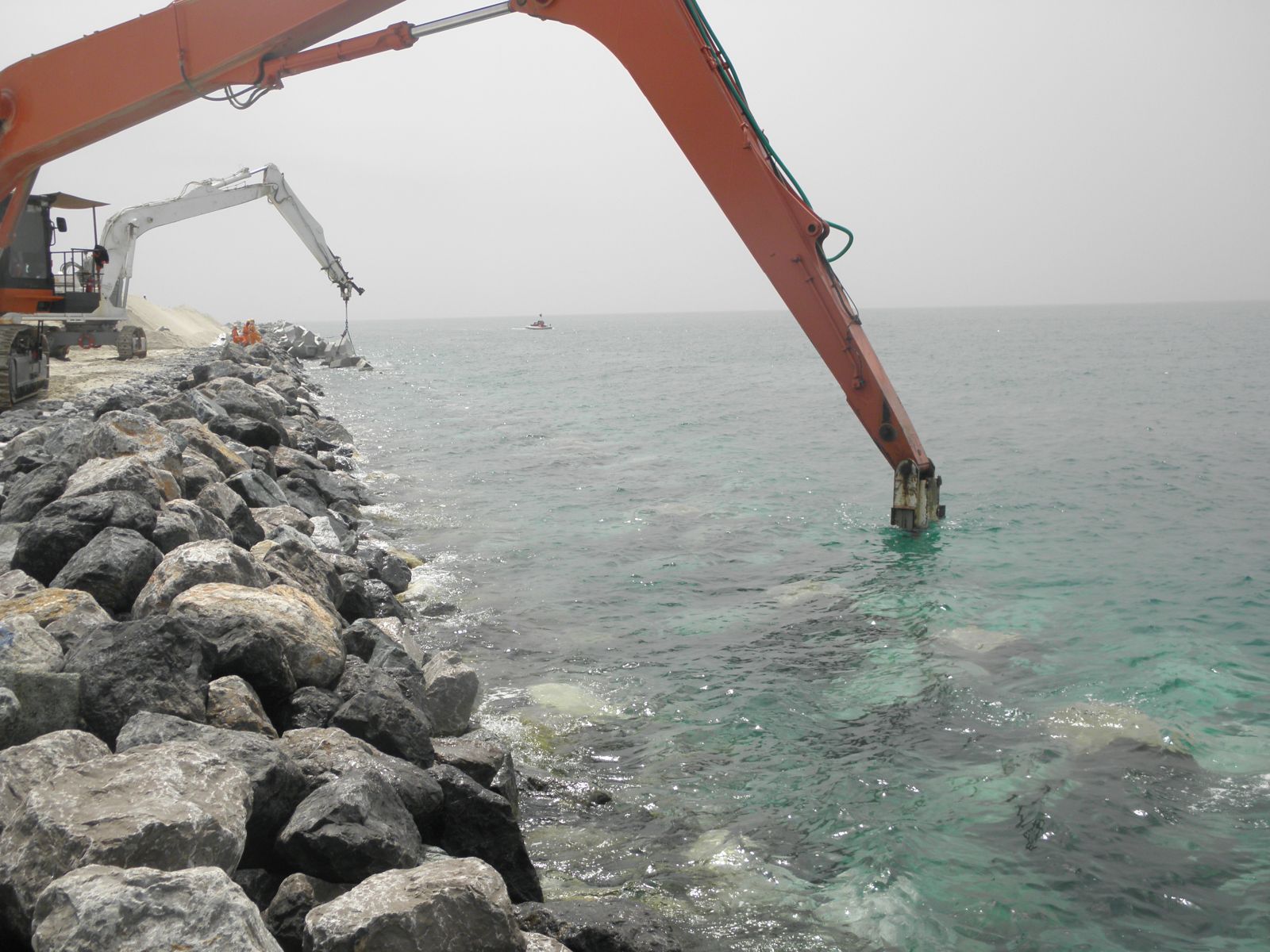
.jpg)
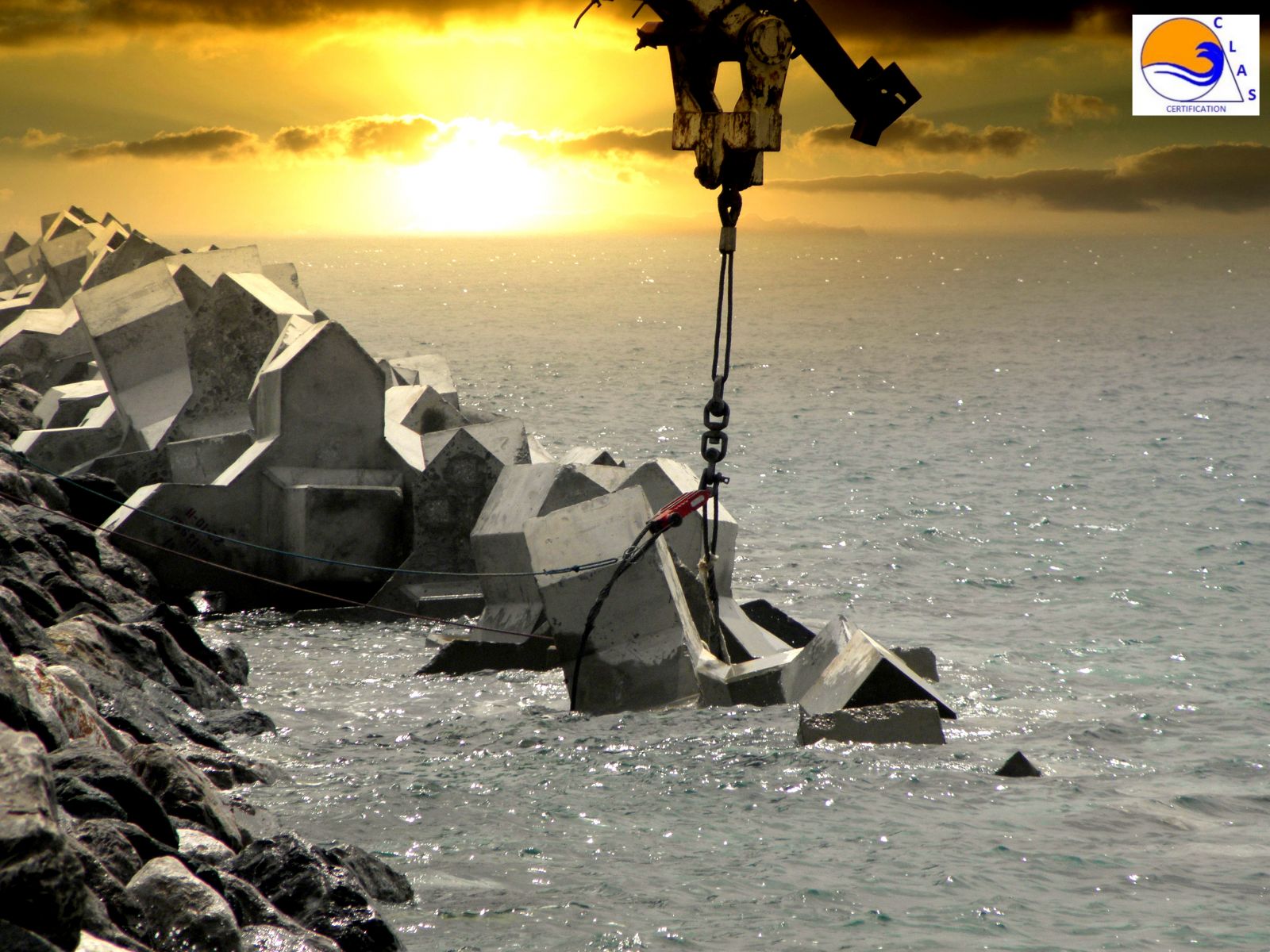
Comments from SIXCO
Link reference Construction DAS ISLAND
Link reference Expertise DAS ISLAND
Link reference Certification DAS ISLAND
2013 ZAKUM MIDDLE
.jpg)
30,000 X-bloc ® of 3 m3.
The NMDC company was to build four oil islands on the ZAKUM site.
Two with X-bloc ® and two with ACCROPODE ™ II.
.jpg)
The inspectors of the company IDMER, now CLAS, assisted NMDC full time with the following mission:
Train all staff in specific X-bloc ® security
Train the X-bloc ® installation teams.
Provide the interface between the company and DMC.
Establish and implement certification procedures.
To issue the certification of conformity to the technology.

.jpg)
.jpg)
NMDC COMMENTS:
Mail sent to IDMer now CLAS:
“I would like to thank you personally for the great contribution to the ZAKUM project with the placement of X-bloc ® and ACCROPODE ™ II and maintening the good relationship during execution of the works, with all on site and the client as well.
IDMer really showed great professionalism during the execution of the project and contributed to the success we have achieved as 1 team ».
Link reference ZAKUM MIDDLE Construction
Link reference ZAKUM MIDDLE Certification
2014 ZAKUM SOUTH
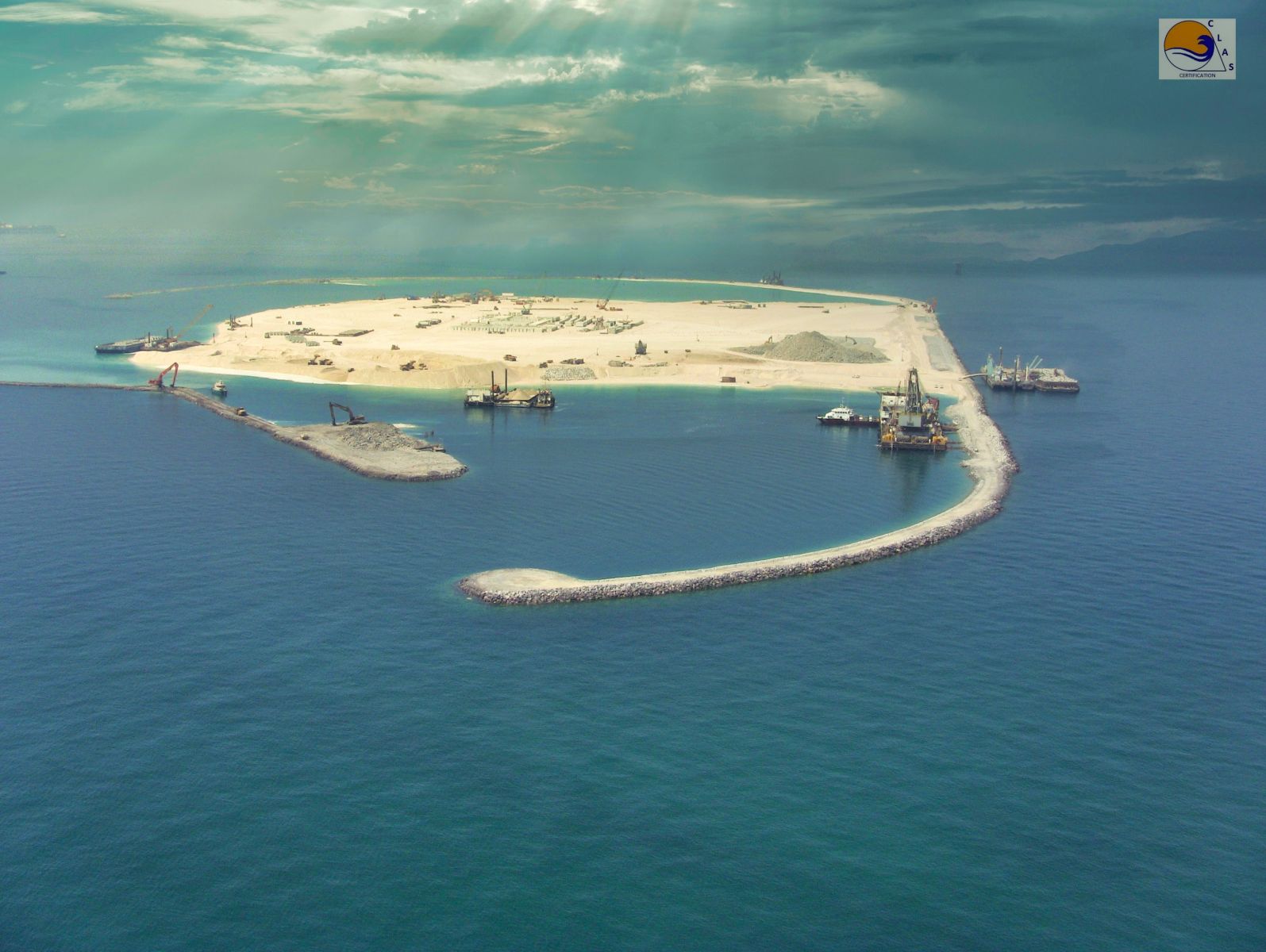
30,000 X-bloc ® of 3 m3.
The NMDC company was to build four oil islands on the ZAKUM site.
Two with X-bloc ® and two with ACCROPODE ™ II.
.jpg)
The inspectors of the company IDMER, now CLAS, assisted NMDC full time with the following mission:
Train all staff in specific X-bloc ® security
Train the X-bloc ® installation teams.
Provide the interface between the company and DMC.
Establish and implement certification procedures.
To issue the certification of conformity to the technology.

.jpg)
.jpg)
Link reference ZAKUM SOUTH Construction
Link reference ZAKUM SOUTH Certification
2016 - 2018 PUERTO MOIN COSTA RICA
.jpg)
17,000 X-bloc ® of 4.5 m3
The company VAN OORD was to build a new port protected by 17,000 X-bloc ® of 4.5 m3. The sea conditions were difficult:
Constant swell and poor visibility most of the time.
VAN OORD has adopted a good strategy: ECHOSCOPE® + divers trained by CLAS.
CLAS was to train divers and non-divers, supervise the installation of Xbloc® and issue certification of conformity to the technology.
.jpg)
The CLASS A BREAKWATER certified project was completed on time and fully approved.
.jpg)
Comments from Van Oord
Reference link PUERTO MOIN Construction
Reference link PUERTO MOIN Certification
2021 - 2022 LA TURBALLE FRANCE
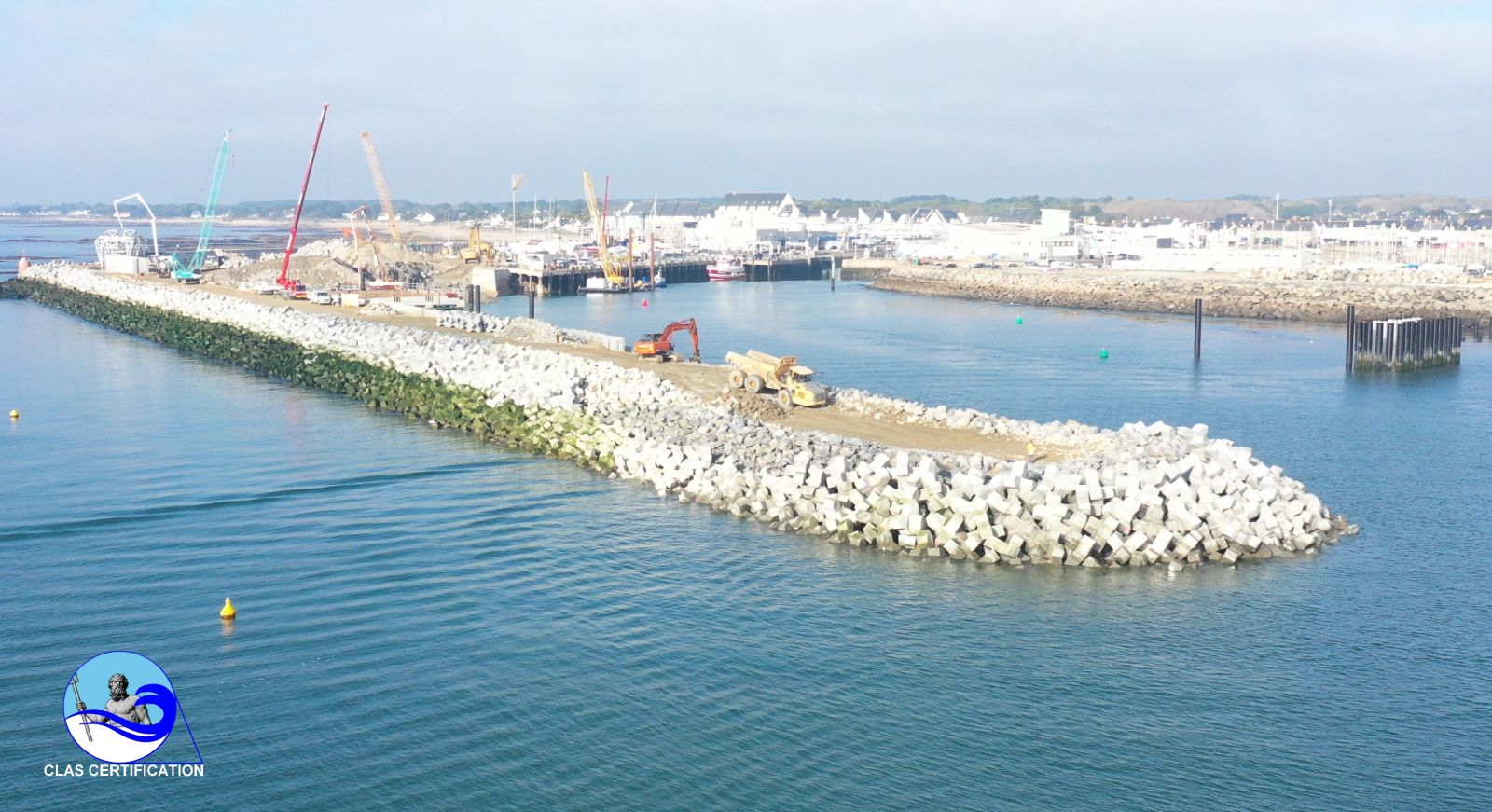
The CHARIER company had to build the new breakwater in the port of La Turballe.
2,000 X-bloc ® of 2.5 and 4 m3 were to be laid.
The CHARIER company called on the expertise of CLAS to support it throughout the project.
The mission entrusted to CLAS:
- Support project management,
- Train the installation teams,
- Bring the production to its best possible level,
- Implement the quality certification procedure for a CLASS A structure.

CLAS began by training all personnel in the specific safety of the project, in our techniques for installing X-bloc® by divers and in quality. Production was then able to be increased and brought to its best level with an average of 8 X-bloc® correctly placed per effective hour of placement.

Despite the difficulties of building such a structure in winter, we were able to move forward quickly enough to deliver the structure on time.

The CLASS A BREAKWATER certified project was completed on schedule and approved without reservation.
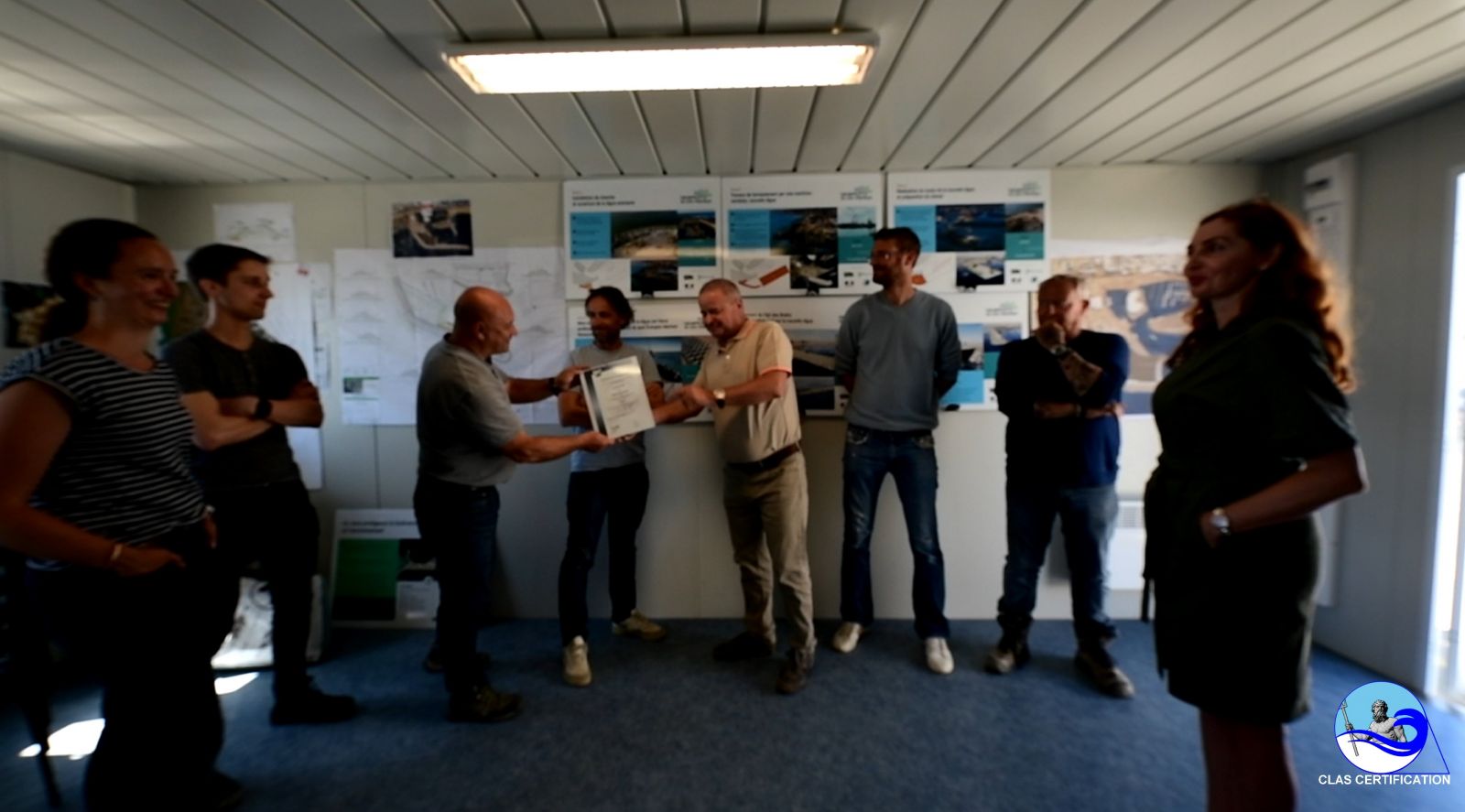
Comments from CHARIER


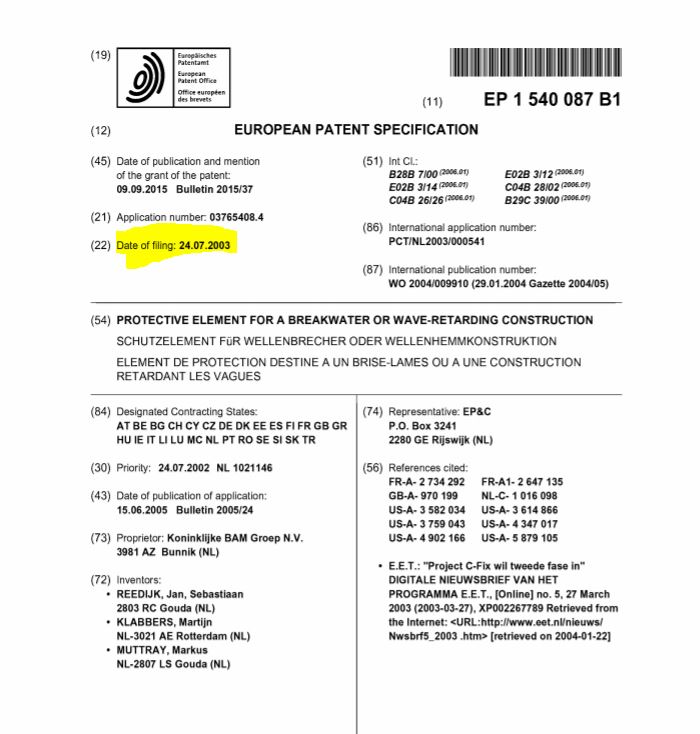
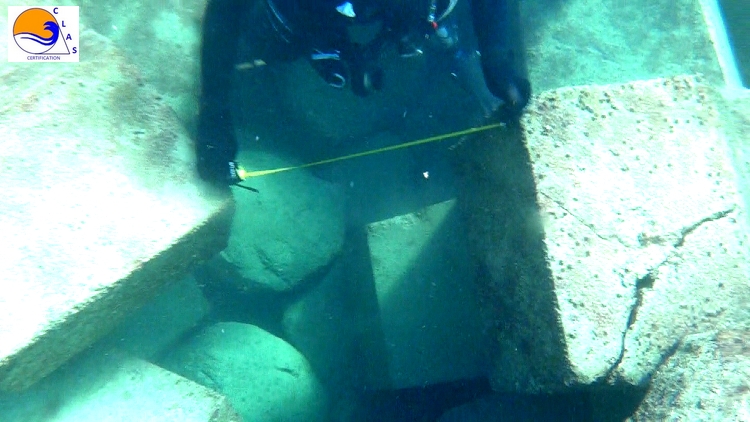
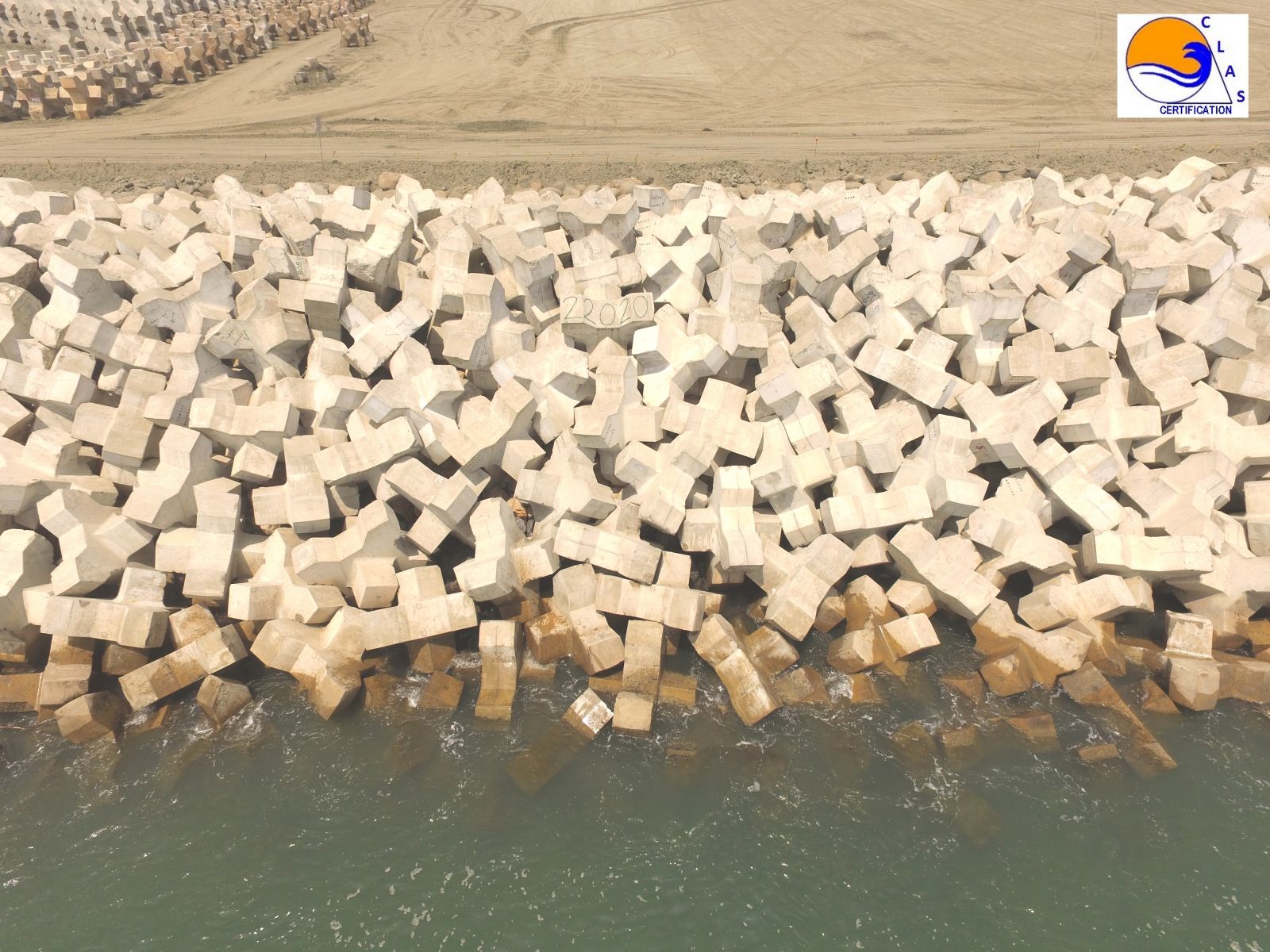
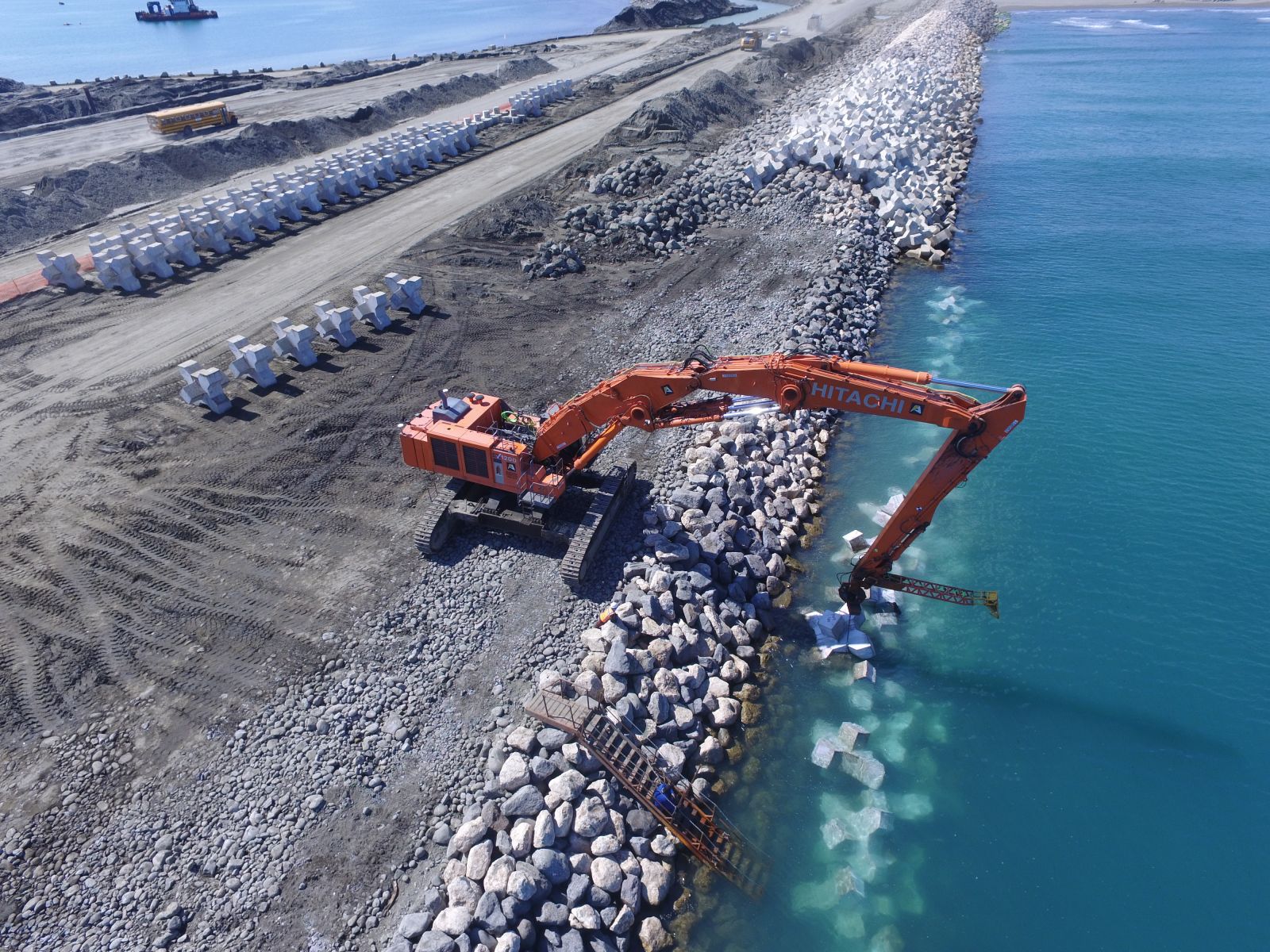
.JPG)
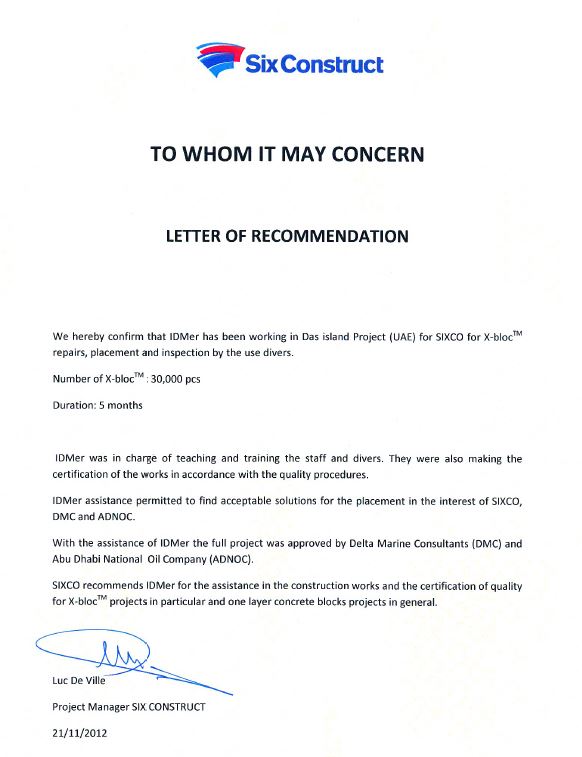
.JPG)
